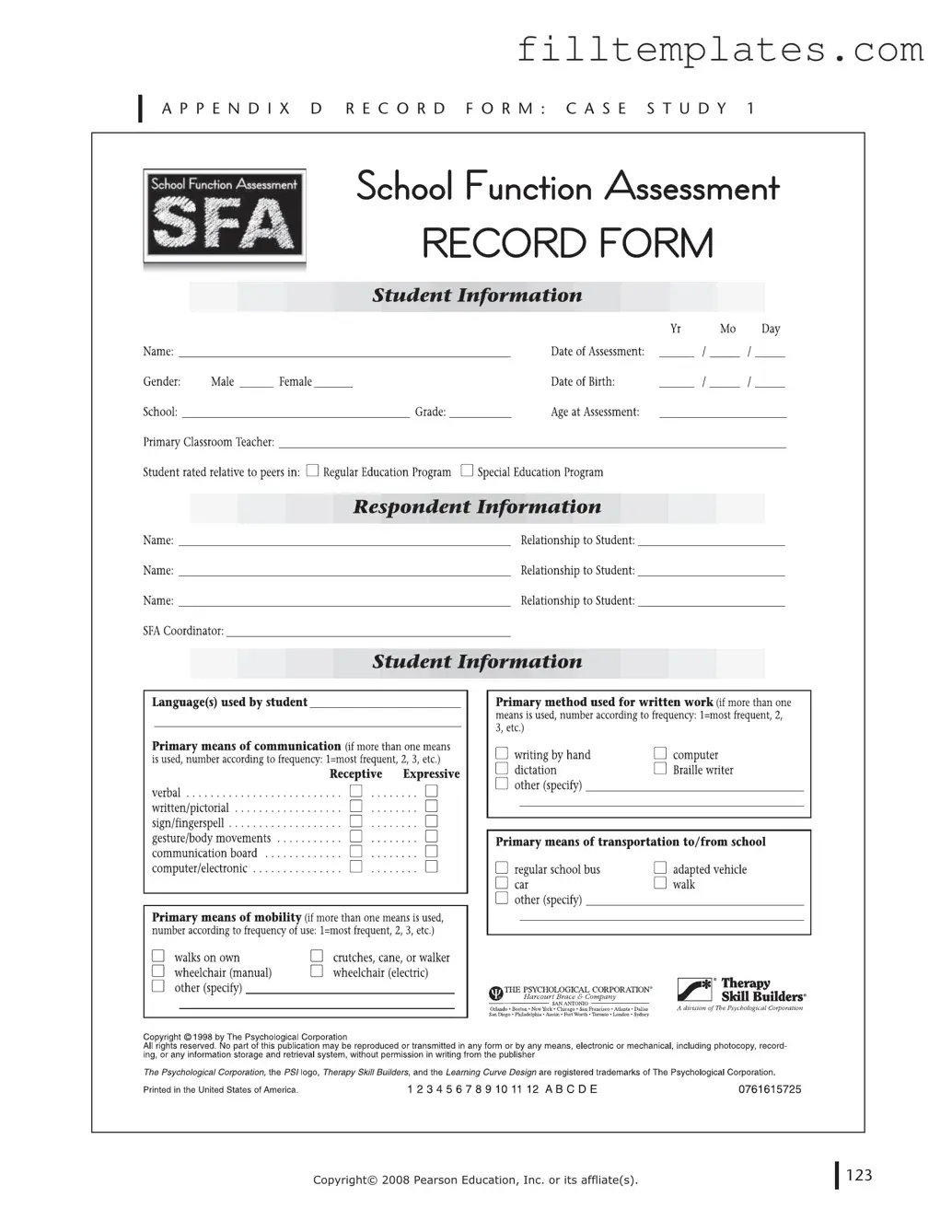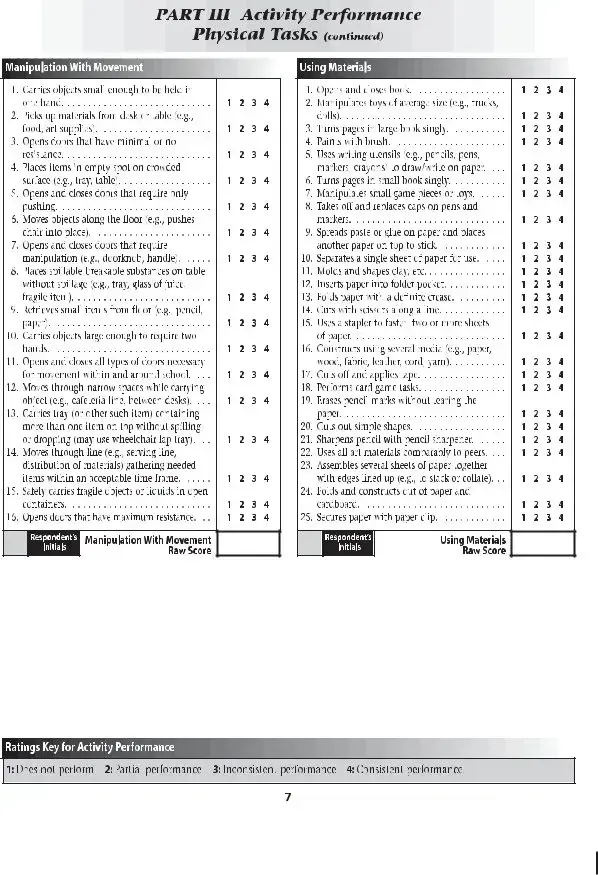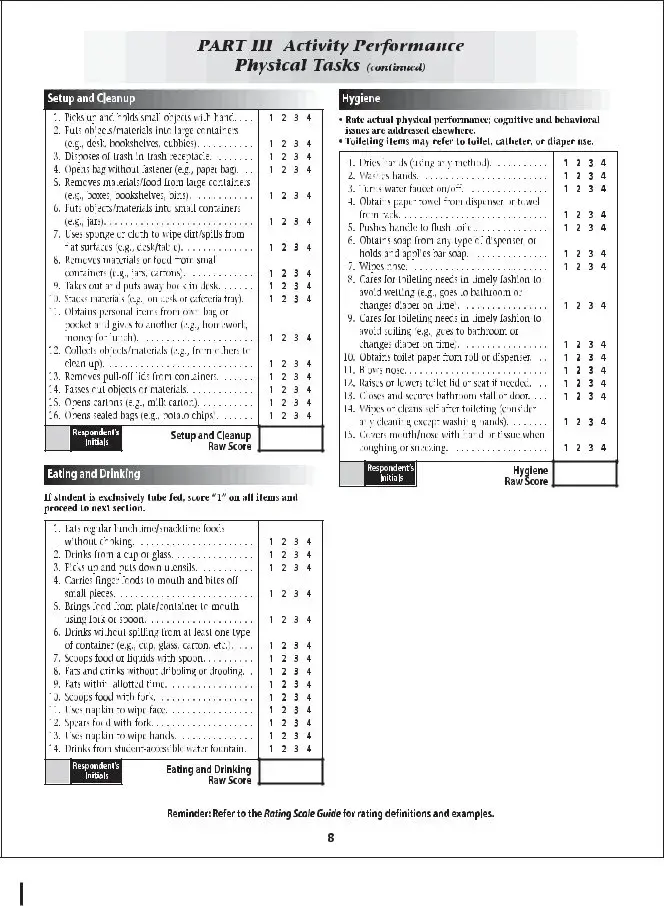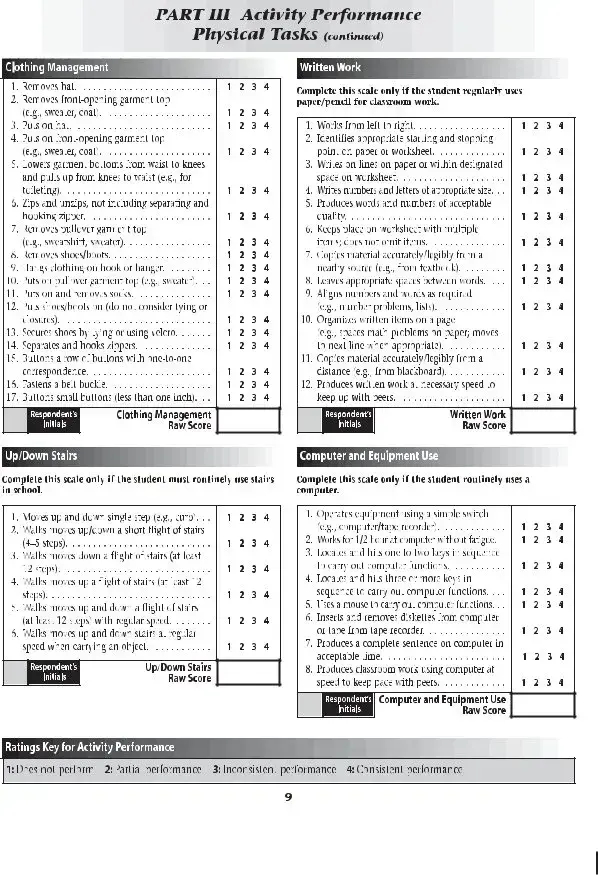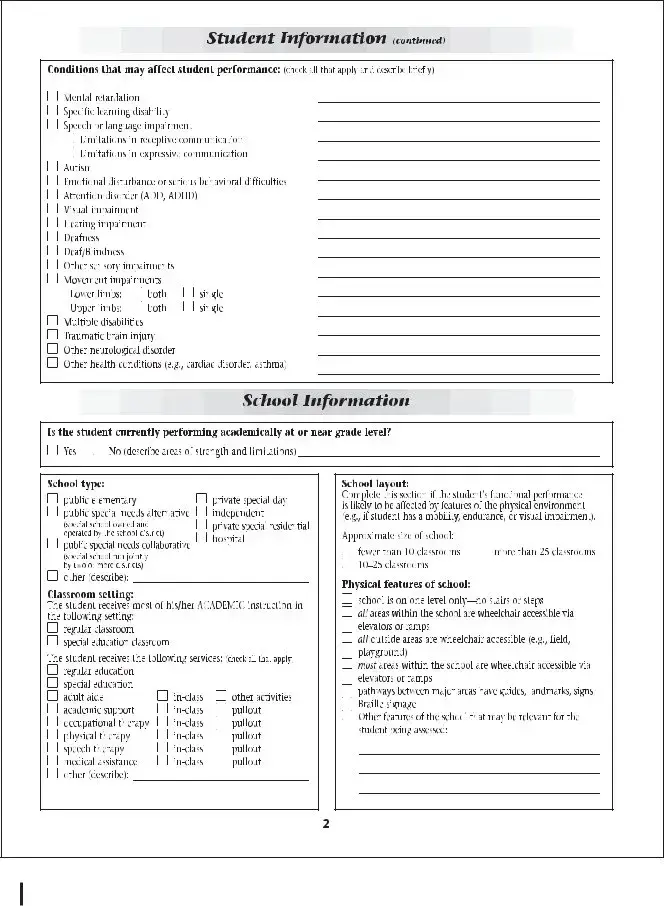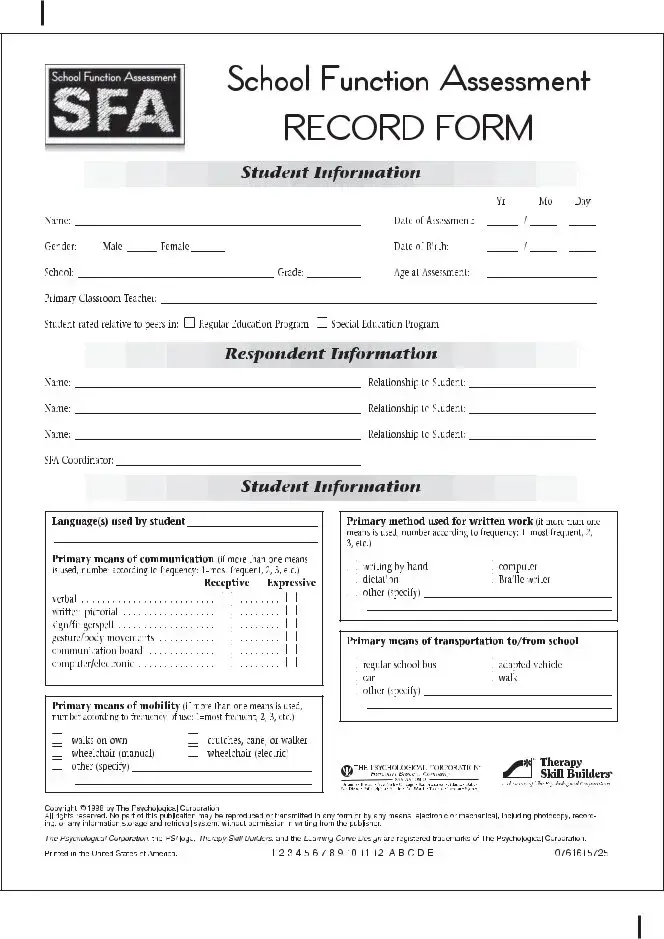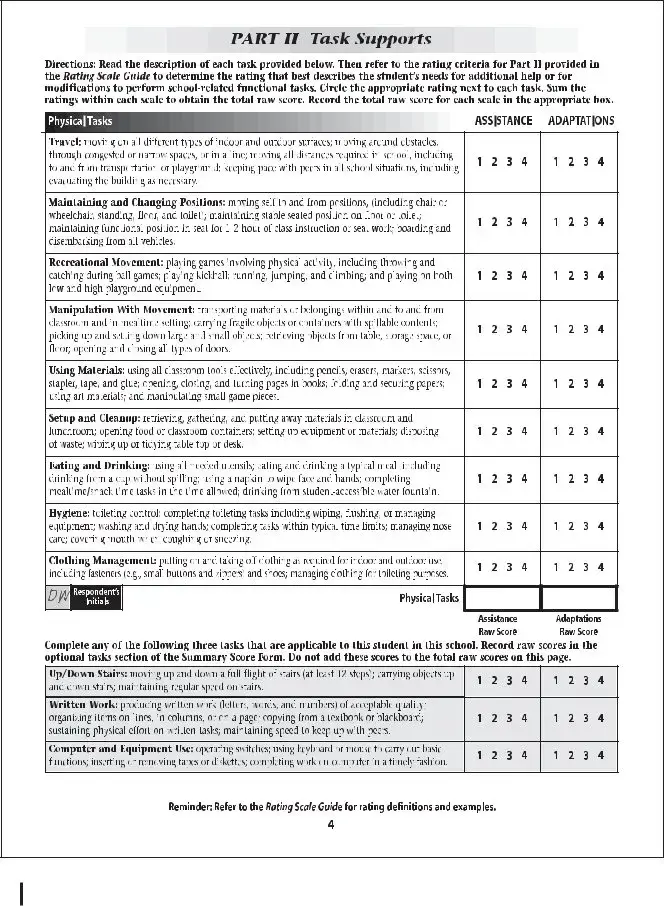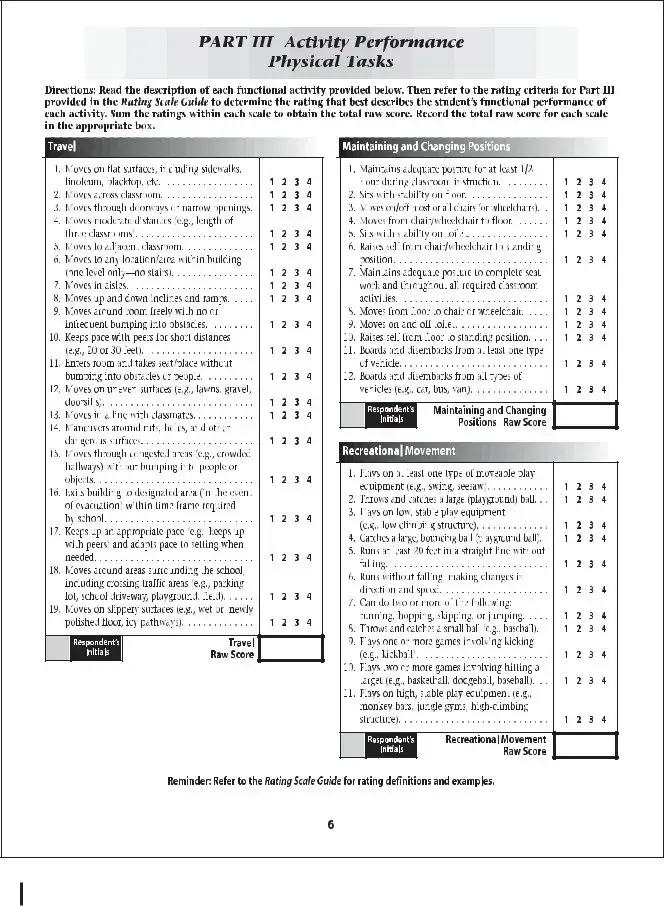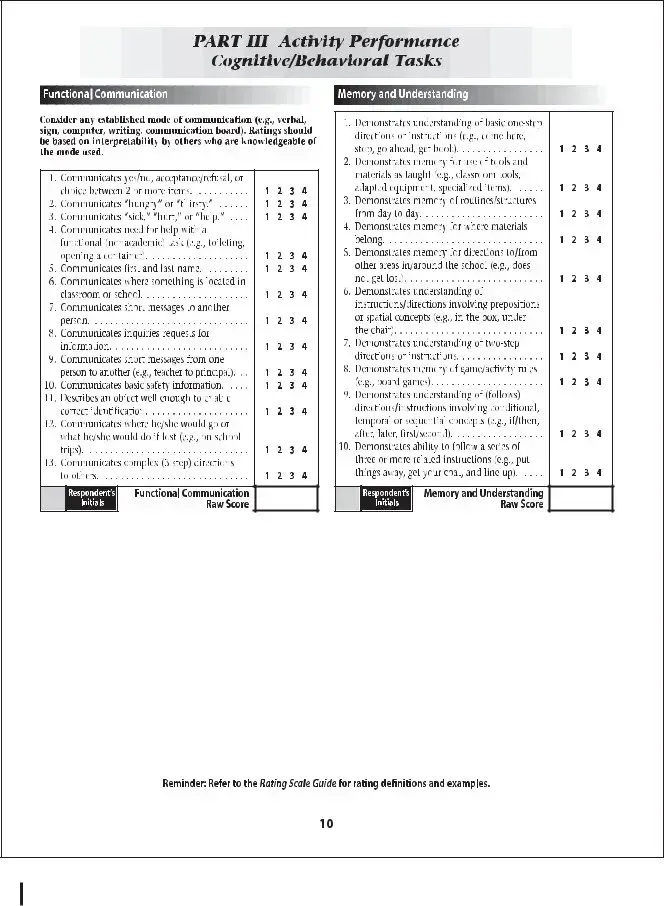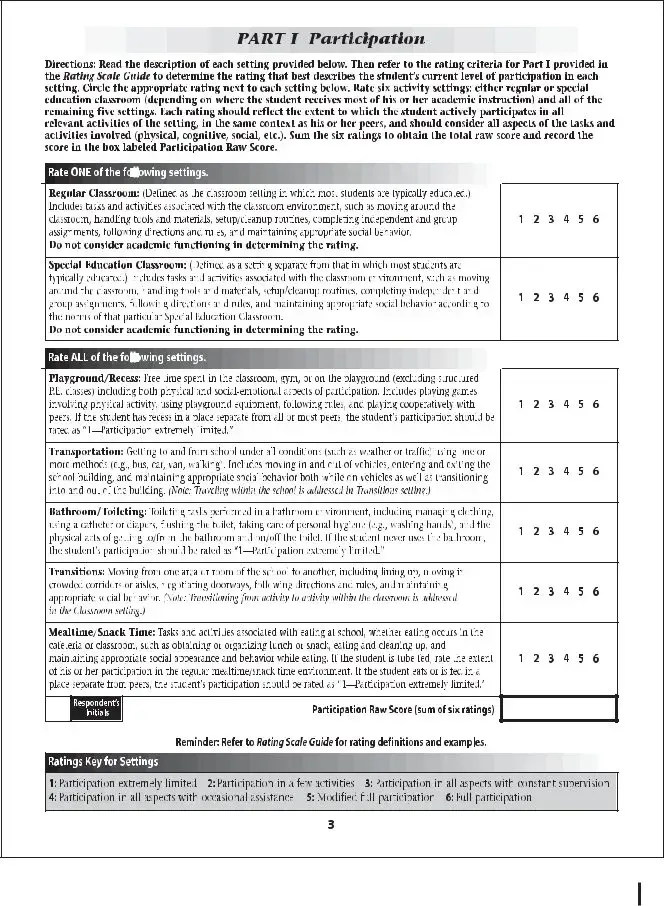Download School Function Assessment Template
The School Function Assessment form is a tool designed to evaluate a student's participation in school-related activities and their performance in various functional tasks. This assessment helps educators and parents understand the strengths and challenges a child may face in a school environment. By identifying these areas, appropriate support can be provided to enhance the student's educational experience.
Open School Function Assessment Editor
